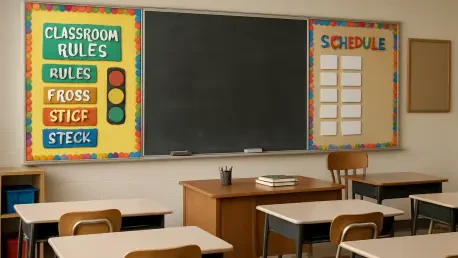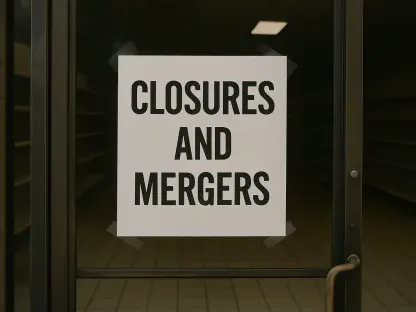In today’s fast-paced educational landscape, technology has become an indispensable ally for teachers navigating the complex demands of classroom management, from delivering engaging lessons to handling administrative tasks and ensuring student safety. As digital tools continue to evolve, they offer innovative ways to address the multifaceted challenges educators face, whether in a bustling elementary classroom or a tech-heavy high school setting. These solutions not only streamline workflows but also foster environments where learning can thrive. The significance of selecting the right software cannot be overstated, as it directly impacts student engagement, behavior, and communication with families. This exploration delves into the standout classroom management tools currently shaping K-12 education, drawing on real teacher experiences to highlight their practical applications. By examining a range of platforms that cater to diverse needs—spanning behavior tracking, device monitoring, family outreach, and learning management—educators can gain valuable insights into which tools best suit their unique classroom dynamics. The focus remains on usability, affordability, and adaptability, ensuring that the recommendations resonate with the real-world needs of teachers across different grade levels and subjects.
Fostering Positive Behavior and Engagement
Managing student behavior effectively stands as a cornerstone of a productive classroom, and digital tools have stepped up to ease this burden with intuitive solutions. ClassDojo emerges as a leading platform in this arena, celebrated for its ability to encourage positive actions through a point-based system that rewards students for traits like kindness and collaboration. Beyond its engaging interface, particularly appealing in elementary settings, the software facilitates seamless updates to parents about their child’s progress, enhancing transparency and involvement. Its design prioritizes simplicity, allowing teachers to integrate it into daily routines without a steep learning curve. This tool’s strength lies in building a sense of community, turning behavior management into a collaborative effort between students, educators, and families, ultimately fostering a supportive atmosphere where young learners feel motivated to excel.
For educators in middle and high school environments, where behavioral challenges often take on a different tone, platforms like SchoolMint Hero offer tailored functionalities that resonate with older students. This tool focuses on documenting behavior trends and implementing reward systems to reinforce positive conduct, providing a structured approach to discipline. Additionally, Tes Class Charts combines multiple aspects of classroom oversight, blending behavior tracking with attendance monitoring and seating arrangements to create a holistic management system. Teachers find value in its comprehensive nature, as it reduces the need for multiple apps by addressing several needs in one place. Such tools underscore the importance of adaptability, ensuring that behavior management strategies evolve with the age and needs of students, thereby maintaining order and engagement across diverse educational stages.
Ensuring Focus and Safety in a Digital Age
As technology becomes ubiquitous in classrooms, with students frequently using devices for learning, the need to monitor activity and ensure online safety has grown paramount. GoGuardian and Securly stand out as premier solutions in this domain, equipping teachers with the ability to oversee student screens in real time, lock devices when distractions arise, and guide learners back to relevant content. These platforms also employ advanced AI to detect concerning behaviors, such as potential bullying or self-harm indicators, adding a crucial layer of protection. Their widespread adoption among schools highlights a collective recognition of the dual role technology plays—both as an educational asset and a potential source of distraction or risk. By prioritizing student focus and safety, these tools help create a secure digital learning environment where technology serves its intended purpose.
While GoGuardian and Securly dominate, alternatives like Hāpara and Lightspeed Systems also cater to the demand for device oversight, particularly in schools using Chromebooks. Hāpara offers robust monitoring capabilities with an emphasis on guiding student activity, while Lightspeed Systems provides web filtering and safety features, though some educators note inconsistencies in usability and visibility. These variations in user experience emphasize the necessity of aligning tool selection with specific classroom setups and institutional policies. The broader trend points to an increasing reliance on such software to balance the benefits of digital learning with the responsibility of safeguarding students, ensuring that technology enhances rather than hinders educational goals. As device usage continues to rise, these monitoring solutions remain critical for maintaining a focused and protected classroom.
Bridging the Gap with Family Communication
Effective communication between educators and families forms a vital link in supporting student success, and modern tools are revolutionizing how these connections are made. Remind has risen as a top choice among teachers for its straightforward two-way messaging system, which allows for real-time updates and discussions with parents. Its automatic translation feature, supporting over 90 languages, ensures that language barriers do not impede family involvement, making it an inclusive platform for diverse communities. The ease of use and accessibility of this app resonate strongly with educators across all grade levels, as it simplifies the process of keeping parents informed about academic progress, events, or behavioral updates. This focus on connectivity reinforces the partnership between home and school, a critical factor in fostering student growth.
Beyond Remind, a variety of other applications like Bloomz, ClassTag, and BrightArrow provide compelling options for family outreach, each with distinct strengths. BrightArrow, for instance, excels in delivering mass notifications, enabling schools to send urgent alerts or general announcements via text, email, or voice calls, ensuring no family is left out during critical moments. Tools like these prioritize inclusivity by accommodating varying levels of technological access and linguistic diversity, reflecting the growing need to engage all stakeholders in a child’s education. The emphasis on clear, consistent communication through such platforms helps build trust and collaboration, ensuring that parents remain active participants in the learning journey. As classrooms become more diverse, these solutions play an essential role in maintaining strong, supportive networks around students.
Streamlining Learning with Management Systems
Organizing academic content and facilitating seamless learning experiences are at the heart of effective classroom management, and learning management systems (LMS) have become indispensable in this effort. Google Classroom continues to lead as the most widely adopted platform, lauded for its cost-free access and effortless integration with other Google tools like Docs and Drive. Teachers value its simplicity in creating, distributing, and grading assignments, as well as its capacity to centralize communication with students and families. This system’s intuitive design reduces administrative burdens, allowing educators to dedicate more time to instruction rather than paperwork. Its overwhelming endorsement by teachers speaks to its versatility across various educational contexts, making it a foundational tool for modern classrooms.
For schools seeking alternatives or district-wide solutions, platforms like Schoology and Canvas offer robust features tailored to broader institutional needs. Schoology provides a comprehensive environment for course management and collaboration, while Canvas supports detailed customization for curriculum delivery, often appealing to larger educational systems. Though these alternatives cater to specific requirements, the dominance of Google Classroom underscores a preference for accessibility and ease among individual educators. The impact of such systems extends beyond mere organization—they transform how learning is delivered and tracked, enabling a more cohesive and efficient educational experience. As technology continues to shape pedagogy, these LMS platforms remain critical in equipping teachers with the resources to manage academic workflows effectively.
Reflecting on Technological Impacts in Education
Looking back, the integration of digital tools into classroom management marked a significant shift in how educators approached their multifaceted roles over recent years. Platforms like ClassDojo and Google Classroom redefined engagement and organization, while solutions such as GoGuardian ensured that the rise of device usage came with necessary safeguards. Communication apps like Remind bridged gaps between schools and families, fostering stronger partnerships that were once harder to maintain. These advancements alleviated many traditional challenges, allowing teachers to focus more on student development.
Moving forward, the focus should shift toward customizing these tools to fit specific classroom needs, ensuring that educators have access to training and support for optimal use. Schools might consider combining multiple platforms—perhaps pairing a behavior tool with an LMS—to address diverse demands holistically. Additionally, ongoing evaluation of affordability and accessibility will be crucial to prevent disparities in tech adoption across districts. By thoughtfully leveraging these innovations, the educational community can continue to build environments where technology enhances learning outcomes, paving the way for sustained progress in student success.









